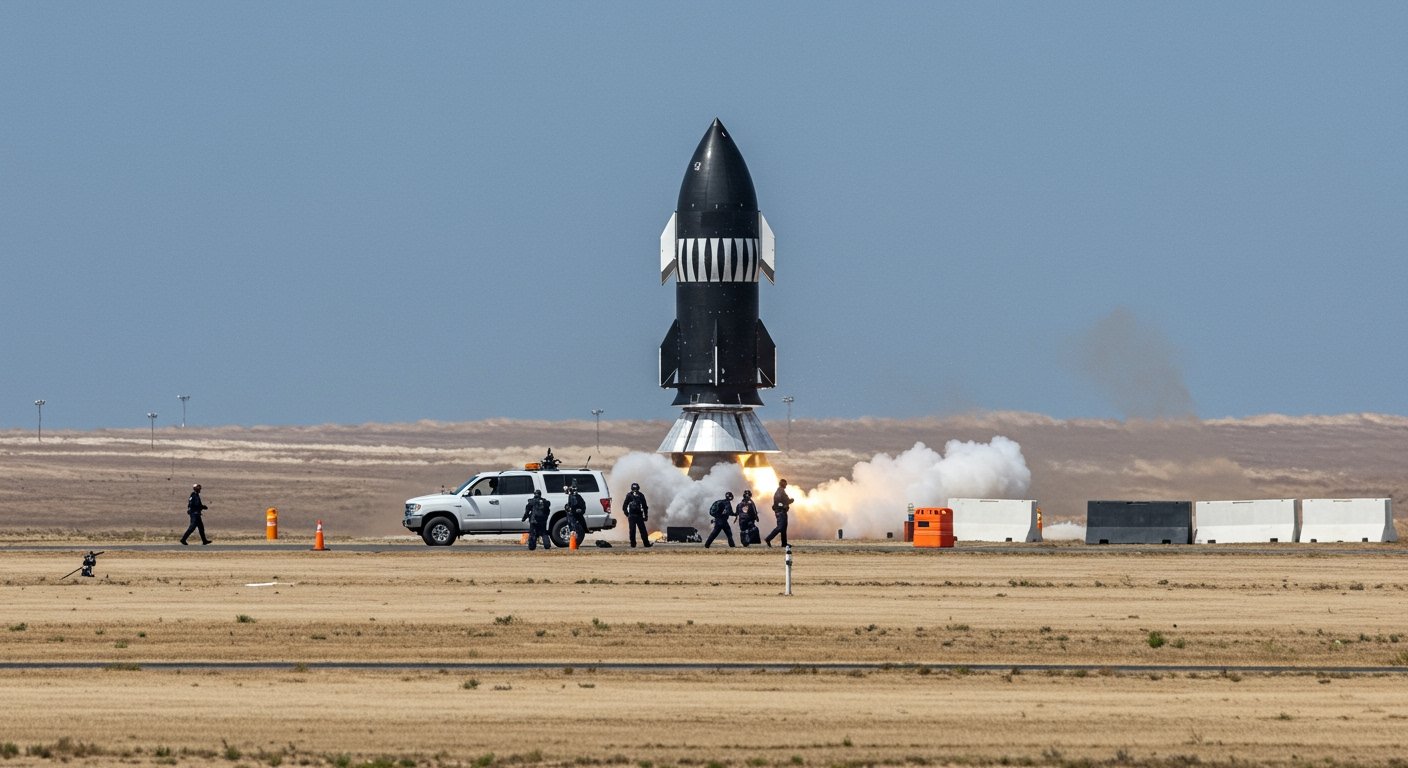STARBASE, Texas – A prototype of SpaceX’s ambitious Starship rocket experienced a significant explosion while undergoing testing late Wednesday night at the company’s Starbase facility, located at the southern tip of Texas near Brownsville. The incident occurred around 11 p.m. local time, just as the vehicle was positioned on the test stand in preparation for what would have been its tenth flight test.
SpaceX officials confirmed the event in a statement, describing it as a “major anomaly.” Crucially, the company reported that a predefined safety clear area was maintained around the test site. All personnel were accounted for and are safe, with no injuries sustained as a result of the explosion.
Context of Starship Development
This latest setback marks another challenging moment in the development of the Starship vehicle, which is central to founder Elon Musk’s long-term vision for space travel, including potential missions to Mars. The Starship program employs an iterative testing approach, often involving ground tests, static fire tests, and short ‘hop’ flights or more ambitious high-altitude tests. While engineers expect some failures in this rapid development cycle, this incident adds to a series of previous difficulties encountered by the Starship prototypes.
Earlier this year, the program saw prototypes break apart during tests in both January and March. Another vehicle experienced a failure in May, tumbling out of control during a flight attempt. These incidents underscore the complex engineering challenges involved in developing a fully reusable, heavy-lift launch system capable of carrying significant payloads and eventually transporting humans to deep space destinations.
The Incident and Immediate Response
The explosion occurred while the rocket was stationary on the test stand. While the exact nature of the “major anomaly” is under investigation, such events during ground testing can stem from various issues, including problems with propulsion systems, fuel handling, structural integrity under stress, or ground support equipment.
Witnesses in the vicinity reported a loud boom and visible plumes following the incident. The location of Starbase, relatively isolated near Boca Chica Beach, helps mitigate risks to the broader public during such tests. The maintained safety clear area is a standard protocol designed to protect personnel and prevent damage outside the immediate test zone.
Investigation Underway
SpaceX has initiated a full investigation into the cause of the explosion. Understanding the root cause is critical for implementing corrective actions and refining the Starship design and testing procedures. The company is coordinating its efforts with relevant local, state, and federal agencies to ensure transparency and adherence to regulatory requirements.
Officials have assured nearby communities that the incident posed no hazard to public safety or the environment beyond the immediate test site. As a precautionary measure and to facilitate the investigation, authorities have asked people to avoid approaching the Starbase site at this time.
Implications for the Program
The Starship program is crucial for SpaceX’s future plans, including the deployment of its Starlink satellite constellation, potential lunar landings as part of NASA’s Artemis program, and ultimately, crewed missions to Mars. Each test failure, while providing valuable data, can introduce delays into the ambitious development timeline.
Engineers will now analyze telemetry data, video footage, and physical evidence from the test stand to pinpoint the failure’s origin. This process can take days or even weeks, impacting the schedule for the next planned tests. Despite the setbacks, SpaceX typically emphasizes the learning process derived from test anomalies, using failures to refine designs and procedures for future iterations of the vehicle.
The incident serves as a reminder of the inherent risks and complexities involved in pushing the boundaries of rocket technology. While the lack of injuries is a significant positive factor, the explosion highlights the challenges that remain before the Starship vehicle can achieve routine, reliable operation necessary for its ambitious long-term goals.






